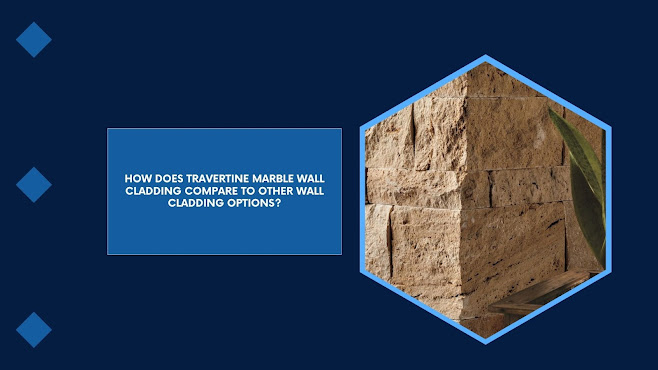How does travertine marble wall cladding compare to other wall cladding options?
Of all the types of covering used in wall cladding, travertine marble has been striking because of its classic beauty. Nonetheless, there are still a number of other materials out there. Let's compare premium quality travertine marble wall cladding to some popular options: tile, woods, and bricks.
1. Aesthetic Appeal
Travertine marble has a slight earthy touch which when incorporated in certain spaces brings out a certain class. It is available in warm colours especially beiges, browns, and cream. Ceramic tiles provide many choices for the two. It can imitate wood, stone, or even a fabric. Wooden panelling gives warmth and a kind of ‘back to nature’ feel to a room. Wood can also change colour or even get spoilt by warps. Brick cladding makes a home appear strong and it is more of a traditional outlook. However, it does not possess the same aesthetic appeal as travertine marble and it also does not come in as many colours.
2. Durability
Travertine marble is indeed very strong and lasts for many years if it is well maintained. It is durable and therefore can withstand scratches and general abuses. Ceramic tiles also have the advantage of being hard wearing and non-absorbent to water. They can be washed and cleaned very easily. Unlike travertine, they do not have any pores hence they will not absorb stains or dirt from the surrounding environment. That is why wood cladding can prove to be very durable if treated well. But at the same time it is more sensitive to moisture and pests compared with the previous type.
3. Installation
Travertine marble comes as tiles and the installation process may take a lot of time and is primarily done by experienced workforce. Ceramic tiles are easier to install and are more popular as compared to marble tiles. They are also smaller compared to other types of displays and they are also more portable due to their light weight. Cladding can be slightly easier depending on the type of wood used and if it is the tongue and groove timber. Brick cladding is the most challenging among the other types because of the weight and requirement of mortar.
4. Cost
Travertine marble in most cases is costlier than the ceramic tiles and wood. This cost comprises the price of the item and the cost of putting it up. Among the two, ceramic tiles are cheaper and easier to obtain in the market. In material cost of wood cladding, there can also be a difference in price based on the kind of wood that is used. Brick is, as a rule, costlier than ceramic tiles even though it can be less costly than travertine in some cases, all depending on the type of brick to be utilised.
5. Maintenance
Travertine marble is slightly porous and as such needs to be resealed to avoid easy staining of the stone surface. Ceramic tiles are easy to maintain. They are easy to clean and do not need to be sealed. The material used for wood gives a building a natural look but they require periodic paint coatings to protect them from dampness and insects. Maintenance also changes with the product type, and the least that needs maintenance is the brick cladding. The simple washing with water will completely clean it from dirt and will always appear to be new.
Final Words
Premium quality travertine marble wall cladding provides a luxurious and elegant look. However, it requires regular maintenance and cleanliness. On the other hand, other materials like ceramics, wooden, or bricks may not provide as luxurious a look, but require less maintenance.
.jpg)
.jpg)

.jpg)
Comments
Post a Comment